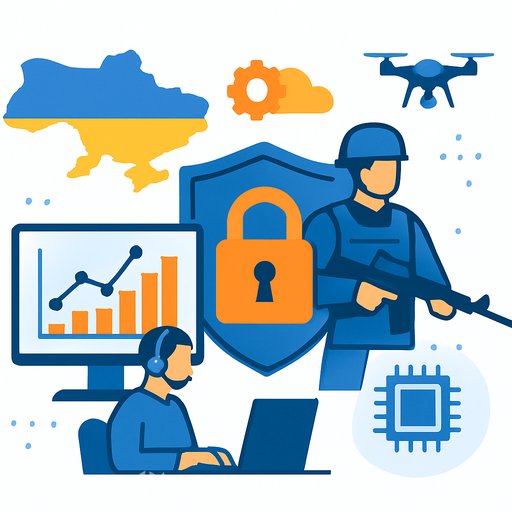Safe Pro Group closes $14M led by Ondas - what PR and communications teams should prioritize now
Safe Pro Group (NASDAQ: SPAI) closed a $14 million strategic investment led by Ondas Holdings (NASDAQ: ONDS). The funding follows previous backing from Ondas and Unusual Machines and is aimed at scaling deployment of Safe Pro's SPOTD threat detection systems across defense and humanitarian missions.
Recent milestones: field evaluations in Ukraine, the launch of SPOTD NODE for offline high-res mapping, and U.S. demo days on October 20, 2025 showcasing SpotlightAI OnSite and NODE to multiple military departments. Integration work is also moving forward with suppliers in the U.S. Army's Short Range Reconnaissance (SRR) program, with models built to identify 150+ explosive threats in real time.
What actually happened
- $14M strategic investment led by ONDS; adds to earlier investments by Ondas and Unusual Machines.
- SPOTD NODE launched: Navigation, Observation and Detection Engine for high-resolution 2D/3D mapping without internet connectivity.
- SpotlightAI OnSite + NODE demonstrated to multiple U.S. military departments on Oct. 20, 2025.
- Integration advancing with suppliers in the Army's SRR program; models support real-time detection of 150+ explosive threat types.
- Platform runs on AWS and connects with Safe-Pro USA protective gear and Airborne Response drone services.
Why this matters for PR and comms
The narrative has three legs reporters look for: capital, capability, and credible interest. You now have all three. Funding validates market confidence, field evaluations in Ukraine provide real-world context, and the U.S. demo day signals buyer intent.
Offline performance and real-time detection address common skepticism about AI reliability and latency in contested environments. The dual defense/humanitarian footprint expands your pitch list to security, policy, and NGO media.
Positioning in one line
AI threat detection on off-the-shelf drones that keeps working when the network goes dark.
Core proof points to lead with
- $14M strategic round led by a public company (NASDAQ: ONDS).
- High-resolution 2D/3D mapping with zero connectivity required (SPOTD NODE).
- Real-time identification of 150+ explosive threats for improved situational awareness.
- Demonstrated to multiple U.S. military departments on Oct. 20, 2025.
- AWS-based platform serving defense, homeland security, and humanitarian operations.
Story angles to pitch
- Why offline AI matters in comms-denied environments.
- From field evaluations to product updates: what Ukraine testing changed.
- Interoperability with the Army's SRR ecosystem and implications for small-unit safety.
- Dual-use path: demining and disaster response benefits for civilians and NGOs.
Suggested messaging blocks
- Problem: Explosive threats are dynamic and hard to spot at scale with human review alone.
- Solution: Computer vision tuned for drone imagery runs at the edge to flag threats and map terrain in seconds.
- Impact: Faster decisions, fewer hazardous routes, safer teams and civilians.
- Trust: Field evaluations and U.S. demo days validate performance outside the lab.
Data and visuals reporters will ask for
- Latency/accuracy ranges and representative frames for true/false positives.
- Before/after samples: 2D vs. 3D maps from NODE in a no-connectivity scenario.
- Breakdown of threat classes covered (150+), grouped by category.
- Supported off-the-shelf drone models and compute footprint at the edge.
Risks and ready-made answers
- False positives/negatives: Share test statistics, update cadence, and human-in-the-loop workflows.
- Data handling: Clarify on-device processing, retention policies, and AWS security controls.
- Export/use policies: Outline compliance, partner vetting, and safeguards for civilian contexts.
- Procurement timing: Set expectations for pilots vs. production and typical evaluation steps.
Next steps for comms teams
- Publish a media kit: demo clips, performance metrics, threat class list, and a one-pager on SRR interoperability.
- Offer joint briefings with a product lead and a field operator for technical depth + practical context.
- Prioritize defense/security, policy, and humanitarian outlets; add analyst briefings to the calendar.
- Track KPIs: qualified demo requests, agency/NGO inquiries, technical downloads, and briefings secured.
Company snapshot (fast reference)
Safe Pro Group builds AI systems for drone imagery processing to identify explosive threats and deliver high-fidelity mapping for situational awareness. The platform runs on AWS and connects with Safe-Pro USA protective gear and Airborne Response services across defense, homeland security, and humanitarian missions.
Source and useful links
Optional: upskill your team on AI concepts
If your comms team needs a quick primer to evaluate AI claims and metrics more confidently, this curated library can help.
Your membership also unlocks:






